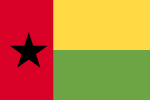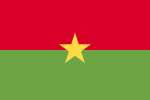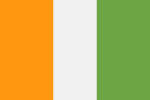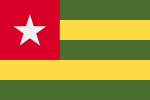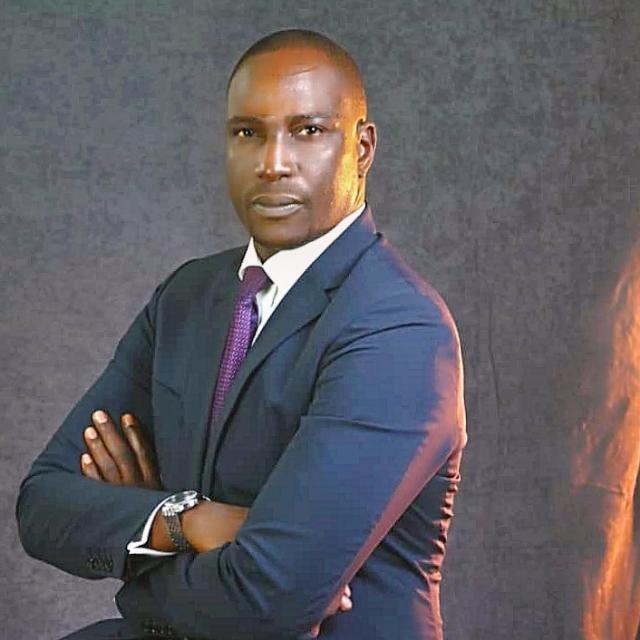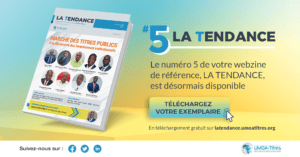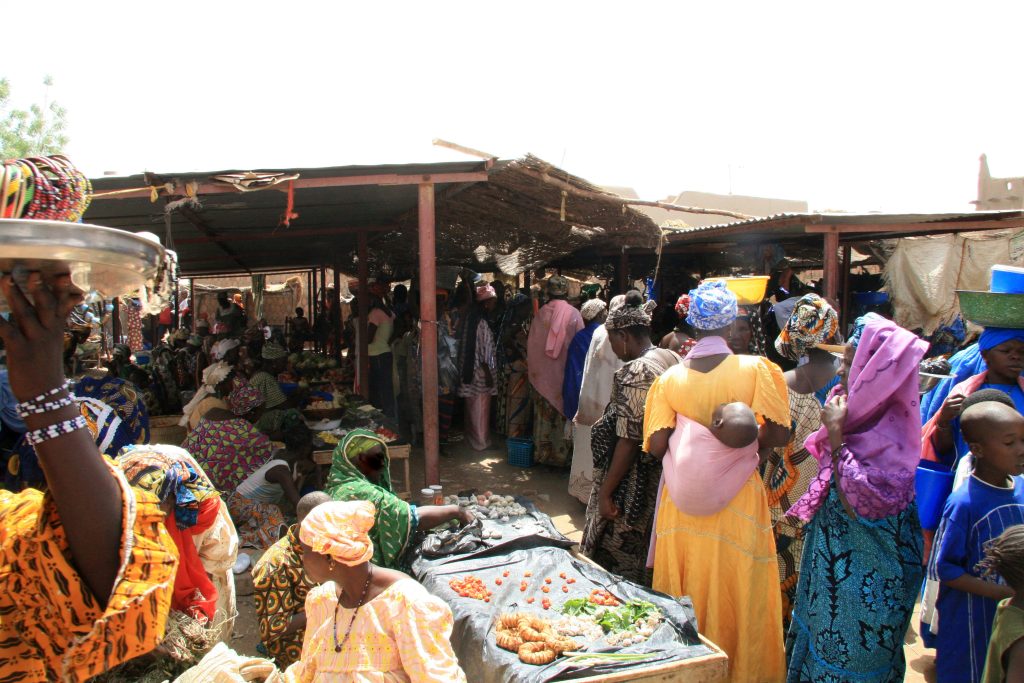Jean-François BROU, Managing Director of SOAGA
“Mobilizing financial resources in the Union, requires an innovation strategy to create new competitive advantages and real added value for investors and for the economy of our region.”
2020 is a year that has affected the global economy and financial markets in many ways. However, the Société Ouest Africaine de Gestion d’Actifs (SOAGA) stood out and recorded at the end of December 2020, a net asset under management of nearly XOF 50 billion via its Épargne Sérénité, Épargne Actions, Épargne Active (Serenity Savings, Equity Savings, Active Savings ) and BOAD Capital Retraite funds (source Sika Finance). How did you come up with such performance?
For a matter of fact, SOAGA’s activities are growing strongly to date, but it should be noted that this growth has been underway for more than three years now, thanks to a complete restructuring of the Institution’s organization and working methods.
Under the impetus of its Board of Directors, made up of renowned regional financial institutions, SOAGA has turned its business model around to focus on its core business.
The company has gradually acquired a young, competent and dynamic team and a modern technological platform, thanks to which it has been able to innovate with the launch of five (05) mutual funds.
The very good performance of SOAGA’s funds, whose net returns to investors for the year 2020 range from more than 7.3% for the bond fund to 17.69% for the equity fund, have convinced investors and savers of the quality of our management and our operating model.
These good performances, coupled with a decent risk control of market operations, as well as the dynamism of our commercial team, allow us to reach at the end of July 2021, an asset under management of over XOF 80 billion.
What is SOAGA’s strategy for mobilizing financial resources from institutional investors and what are the challenges?
Mobilizing financial resources in the Union requires an innovation strategy that creates new competitive advantages and real added value for investors and for the economy of our region.
Our approach at SOAGA is mainly based on innovation through service, in order to retain our investors. This implies a real close relationship, which starts with the identification of the precise needs of our clients, in terms of savings or investment, be they institutional or private.
This transversal advisory approach allows us to propose the most suitable investments for individual objectives, which, as you know, are different depending on whether you are an institutional investor with a large budget or an individual with limited savings capacity.
Our Leitmotiv is to create a collective management which takes into account the particularity of each one.
Can you give us a map of the institutional investors you work with? Who are the biggest players, the least players and why?
The core target of our activity is indeed made up of institutional investors who also collect savings from the public. These include banks, insurers, pension funds, reinsurers and guarantee funds.
Our ambition is to develop synergies with various market players and also with fintechs, by providing complementary services or common offers with the aim of providing investors with innovative, understandable, accessible and one-stop solutions.
One of the major challenges we face is the lack of knowledge of financial products or the distrust of the stock market among investors of all categories.
To remedy this situation, we favor prospecting actions, directed towards large companies and SMEs in the ecosystem, which hold idle cash or which are simply looking for ways to structure or boost employee savings.
Given the current pandemic, can you tell us how public savings are faring within the WAEMU zone?
Though, we have been experiencing the pandemic situation for over a year now, we have seen a gradual increase in public savings in the WAEMU zone, which is higher than what we have seen to date. According to BCEAO, credit institutions in the WAEMU zone would have more than 15 million bank accounts at the end of December 2020, i.e. 1.8 million new accounts compared to 2019 (13.6 million accounts).
We also note a +12% growth in assets managed by management companies in the WAEMU zone, rising from an estimated value of XOF 656 billion at the end of 2019 to XOF 732.6 billion at the end of 2020. In terms of value, bond funds are dominant. Such increase could be attributed to the attractiveness of bond funds in a sluggish equity market. Bond funds account for 67% of total assets in the union, followed by diversified funds, which account for 30%, and equity funds, which account for 3%.
Beyond the resilience of the Union’s economies, this dynamic growth in public savings could be explained by several factors, in particular the change in consumption habits as a result of limited travel, the lack of visibility on the future and, above all, the need to create precautionary savings in these conditions.
The primary missions of your Institution are to strengthen the collection of public savings but also to offer efficient financial products to its customers. Speaking of efficient financial products, what is your analysis of those offered by the Government Securities Market?
At SOAGA, we firmly believe that the management of public savings is a major stake for the economic and financial stability of WAEMU member States.
Our business, asset management, consists of managing and investing capital within the framework of a predefined investment policy in order to maximize returns.
The Government Securities Market mainly offers interest rate products, in particular Treasury Bonds and Bills. These products are the most popular investment vehicles for our institutional and individual investors with a cautious profile, due to the predictability of returns.
Given their position in our economic zone, institutional investors are traditionally risk-averse. As a result, they have a clear preference for pure bond funds or funds with a high bond component.
Our first bond fund, the FCP SOAGA Epargne Sérénité, has generated a net annual return of more than 7.5% over the last three years, using an investment strategy based essentially on the Government Securities Market.
With Government Securities Market products therefore, we are able to offer our clients the security they are looking for while guaranteeing them returns higher than those of traditional banking products. In this, we are very pleased with the support of UMOA-Titres which has brought better organization to the sector and regularly provides us with useful statistics for informed decision-making.
SOAGA works as much on the profitability of retail savings as on the profitability of institutional investors’ investments. What are your thoughts on Government Securities Market as an investment channel for these two profiles?
Asset management is becoming a major driver of savings flows to the financial markets and corporate financing.
SOAGA’s clients can effectively be segmented into two main categories, namely individuals and institutions. The needs of these two categories are not always the same.
- Institutional investors invest part of the public savings that have been collected through their services. As a result, they are more interested in capital preservation than in capital growth. Institutional investors are therefore turning more often to pure bond funds or funds with high bond content. These funds invest mainly in products offered by the Government Securities Market. Decisions are easier to make because of the predictability of returns and the availability of reliable statistics.
- As for individual investors, their profiles vary greatly. They range from the most cautious to the most aggressive. Cautious investors react like institutional investors: they are more interested in bond funds.
In view of these profiles, we can say that the Government Securities Market is one of our preferred investment channels. We regularly participate in auctions in order to obtain the best rates for the benefit of our investors.
Do you have any recommendations for better collection of savings and therefore for more active participation of individuals and institutional investors in public securities issues?
The Government Securities Market in its current configuration is functioning quite efficiently. However, having a precise visibility on the secondary market is rather challenging. As transactions are settled over-the-counter, information does not circulate in real time among investors. We would like the list of transactions to be available for each security, as is the case for the financial market (BRVM). This will enable investors to make more informed decisions.
On the other hand, UMOA-Titres does us a great service by producing pre-issue notes prior to each issue that summarize the information about each issue on a single page. However, these notes are not made public until the last moment before the auctions. As the decision-making time within financial institutions can sometimes be long, it would be more interesting if these notes were available 48 or 72 hours before auctions.
What do you think of the need for the public to be financially educated through popularizing financial concepts to impact public savings, among others?
Savings is not a new concept; we must succeed in explaining to investors that our role goes beyond collecting savings. Sums collected from investors are directed towards financing companies and our States to improve the living conditions of everyone.
The nobility of our profession must be explained in a multidimensional language, such as adapting to the level of understanding of each person, in order to arouse greater commitment from our populations.
The financial education of the population is thus a necessity if we want to achieve a better collection of savings and a better use of the latter for the development of our economic zone. That is one of SOAGA’s missions and we are active especially on social media, on our website as well as on the radio and in the local print media.
The aim is to make information accessible to as many people as possible, which will enable them to make better decisions. Thus, we participate in numerous communication and training activities, hoping to reach out to all those forgotten by the banking system in order to raise their awareness of the opportunities offered by the financial market.




